Once you have created your verification plan in BriefBuilder, it is ready to be executed.
As a project team participant, you will want to know for which verifications you are responsible and how you can administer the outcomes of your verifications in BriefBuilder.
Step-by-step, this article explains how to do that. You can also check out the video (approx. 3 min) below.
Step 1: Find the verifications for which you are responsible
There are different places in BriefBuilder where you can view and edit verification data.
You may already have seen that you can view verification data on the detail view of an object by clicking on the verification button in yellow bar at the top of the detail view (see below). It is not very likely, however, that you’ll want to click on each individual object in BriefBuilder to find the verifications for which you are responsible, because that will be a bit tedious 🙂
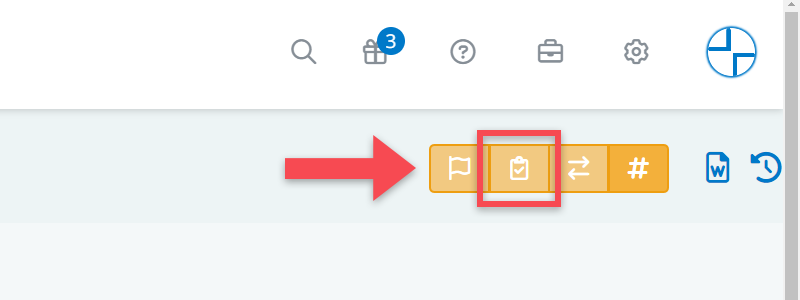
The fastest and easiest way to find those verifications is to use either the verification dashboard or the verification table. Both can be found in the main navigation bar, under the header Verification.
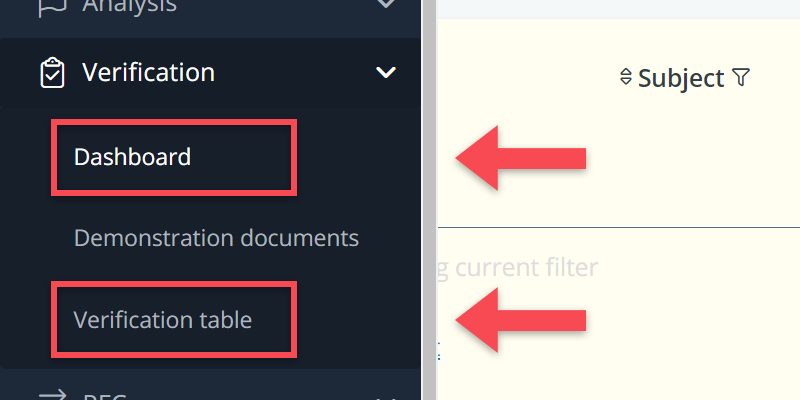
We’ll explain both options below:
Via the verification dashboard:
1. In the navigation bar, go to the header Verification, and then to Dashboard.
2. On the dashboard, first select the relevant verification phase.
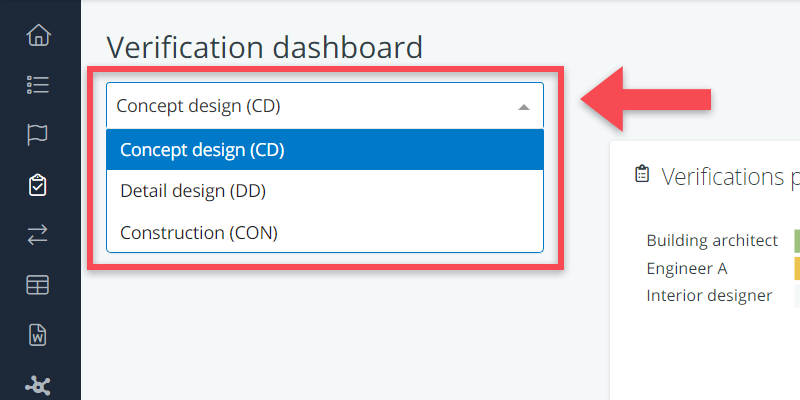
3. Then look at the bar chart called Verifications per responsible. This charts shows all the persons, roles or organizations that are responsible for the verification of a particular set of requirements.
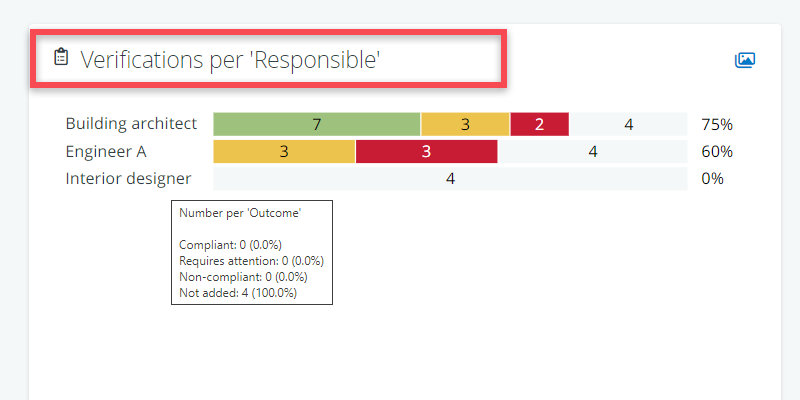
4. Find the bar that is relevant for you and pay attention to the different colors in the bar. The grey part of the bar represents the number of verifications that do not yet have an outcome.
5. Click on the part of the chart that you are interested in and you’ll get a tabular overview of those particular verifications.
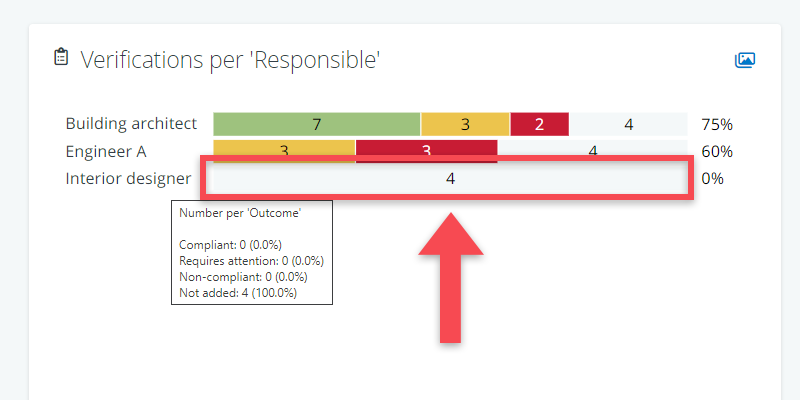
Via the verification table
The alternative route:
1. Go directly to the Verification table in the menu (Navigation bar > Verification > Verification table).
2. In the selection window that you’ll get to see, select the relevant verification phase.
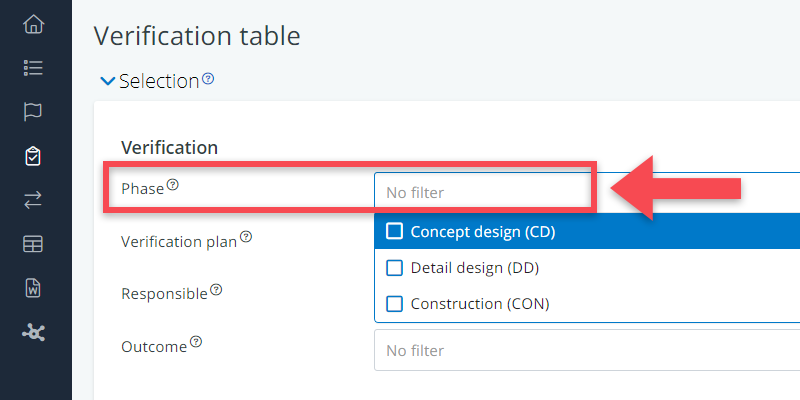
3. In the same window, also select your own account (or role or organisation) for responsible.
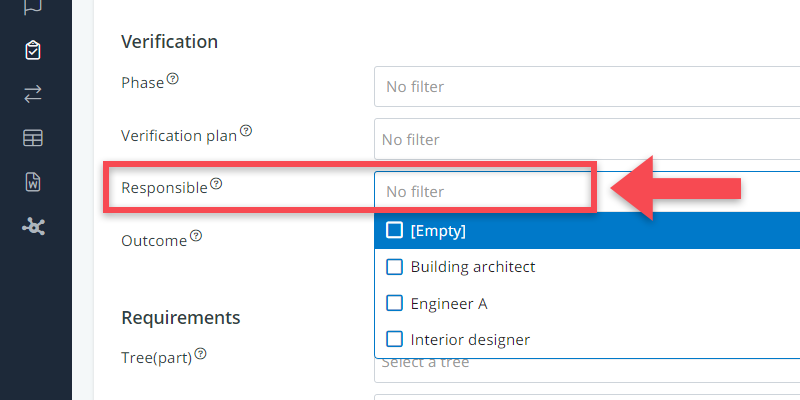
4. And, still in the same window, select empty for outcome (assuming that you are looking for those verifications that you haven’t done yet).
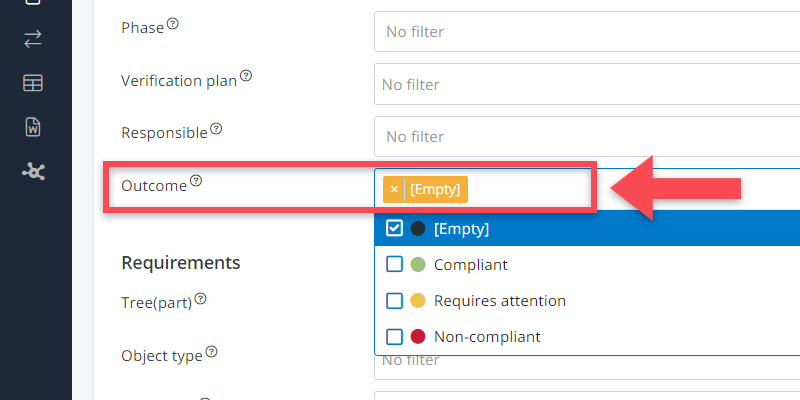
5. If relevant, use the other filters, e.g. tree(part) or requirement type, to select a particular set of requirements.
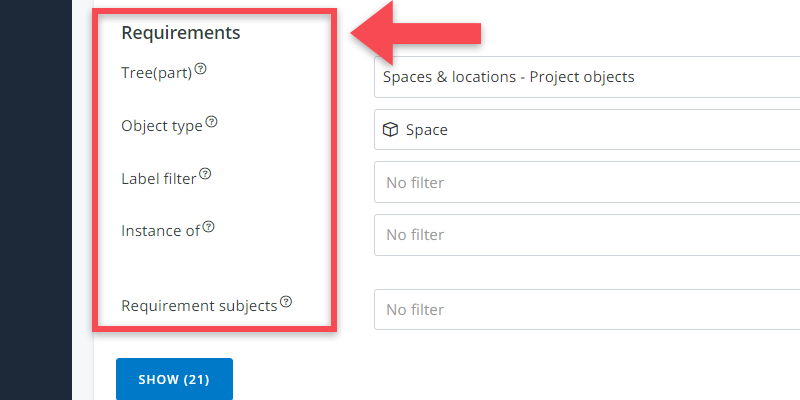
6. Click on Show and you’ll get a tabular overview of the verifications that you are looking for.
Step 2: Apply additional table filters (optional)
Once you are in the verification table, you may want to further narrow down the set of verifications that you are interested in. This can be done by using the filters that can be found at the top of each column.
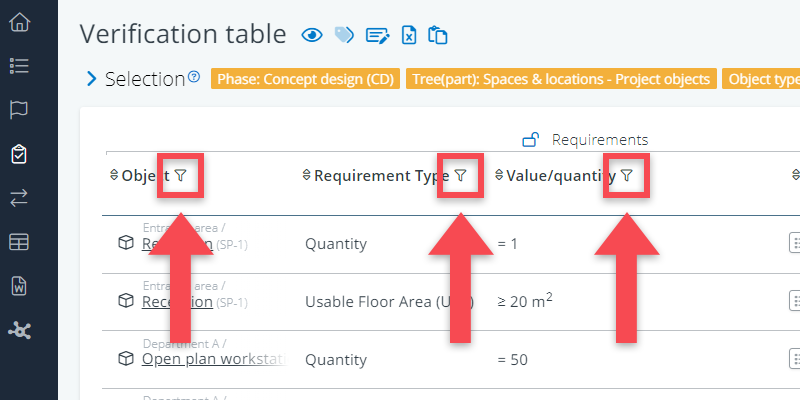
Step 3: Add verification outcomes
Once you have selected or filtered out the set of requirements and verifications that are relevant to you, you can add the outcomes of your verifications (plus any other type verification information that has been defined as relevant for your project).
1. To add an outcome, click in the Outcome column in the column and choose the relevant outcome option.
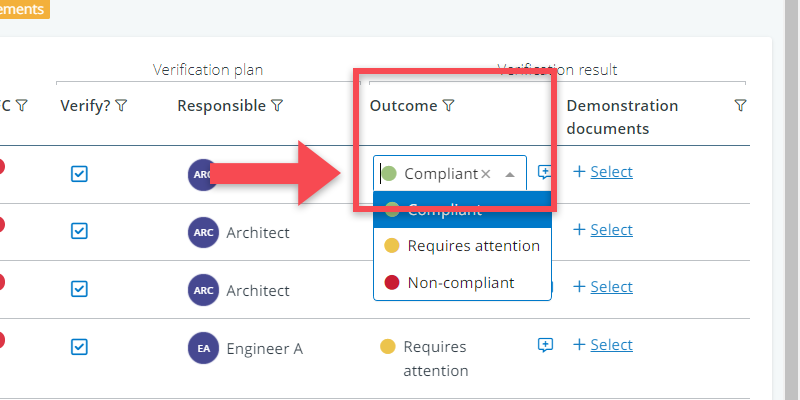
2. Optionally: add a note to your outcome by clicking on the icon.
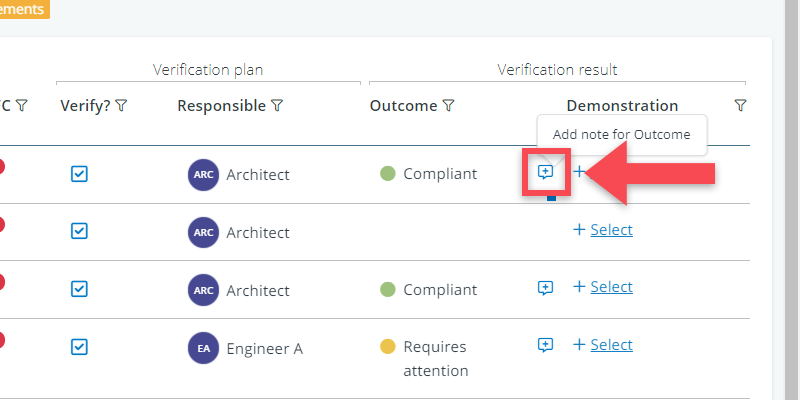
3. Optionally: depending on the project’s verification plan set-up, there may also be other columns to be filled in.
4. If the same outcome applies to the other verifications in your selection, you may want to pull down the outcome by means of the small blue corner in the outcome (click on it and pull it down).
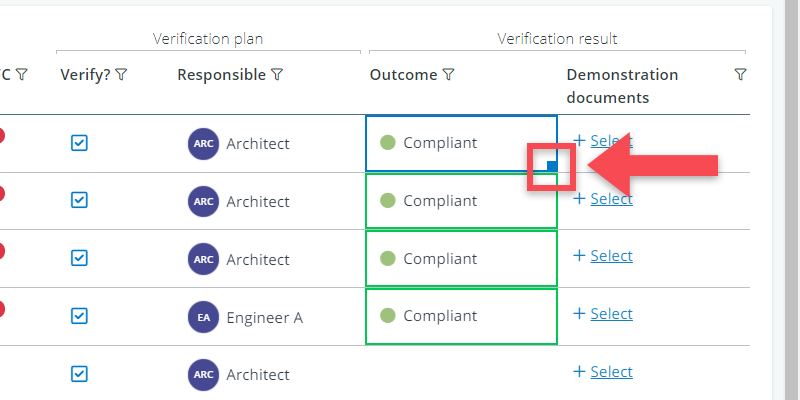
Step 4: Link the verification outcomes to a demonstration document
Where relevant, you can also link a verification result to a demonstration document: a document or file that acts as ‘proof’ for the stated compliance with a requirement.
This can be done in the demonstation documents column.
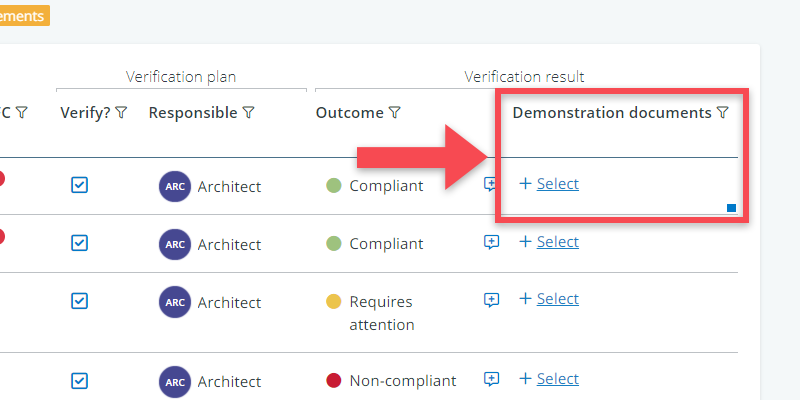
When clicking on Select, there are potentially three possible ways to link a demonstration document to a verification result:
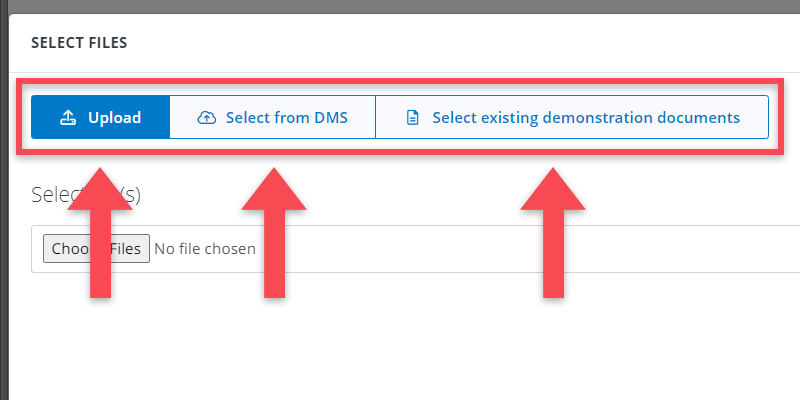
1. Upload: you upload your demonstration document from your device. This document will then automatically be placed in the demonstration documents tree in BriefBuilder.
2. Select from DMS (document management system): if your BriefBuilder model is linked to a DMS (e.g., Microsoft Sharepoint), you can select documents directly from that system. This document will then automatically be placed in the demonstration documents tree in BriefBuilder.
3. Select existing demonstration documents: with this option you can select files that are already present in the demonstration documents tree in BriefBuilder.
Step 5: Check if you executed all parts of the verification plan that are assigned to you
When working on your verifications, you may want to check whether you are fully done: did you add all the verification results that you were supposed to, for that particular project phase?
This is something that you can easily check on the dashboard or in the verification table.
On the dashboard:
1. Select the relevant verification phase.
2. Look for your name (or role or organisation) in the bar chart Verifications per responsible.
3. Check if there relevant bar still has any grey parts (‘Not added’).
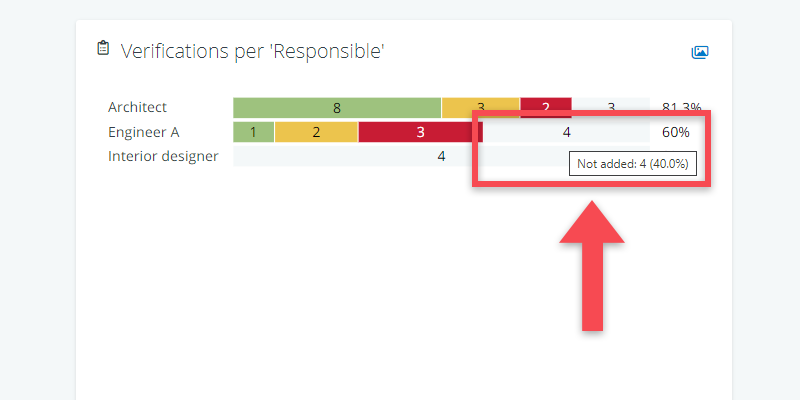
In the verification table:
1. Select the relevant verification phase.
2. Select the relevant name, role or organisation for responsible.
3. Select empty for outcome.
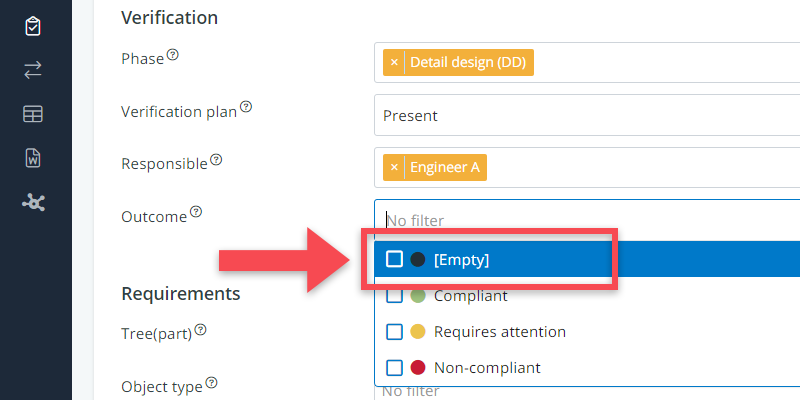
And that’s how you find and execute verifications in BriefBuilder!
